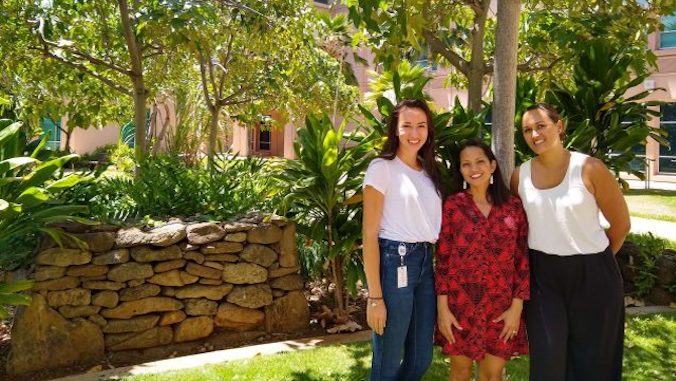
The only Center of Excellence in the nation that is focused on increasing the representation of Native Hawaiian students in medicine and other health professions has been awarded a $3.4-million grant from the U.S. Department of Health and Human Services Health Resources and Services Administration to continue helping Native Hawaiians pursue these careers through education, research and community initiatives.
The Native Hawaiian Center of Excellence (NHCOE) based at the University of Hawaiʻi at Mānoa John A. Burns School of Medicine (JABSOM) has been supporting the advancement of Native Hawaiian students and faculty in medicine for 30 years. The center provides the inspiration, tools and financial assistance it takes to achieve the dream many students have of being able to serve the people of Hawaiʻi as doctors.
“Our Native Hawaiian students are the future leaders that we need to ensure that the communities of Hawaiʻi receive the quality health care services that they deserve,” said Winona Lee, NHCOE principal investigator.
Equity for Native Hawaiian students
Medical school can be daunting for anyone. Factoring in obstacles outside one’s control, like socioeconomic health disparities, can be even more challenging for students. Programs like NHCOE emphasize equity and offer students such as Bree Kaneakua, a Native Hawaiian from Hilo, an opportunity at leveling the playing field.
As a Native Hawaiian, it’s so easy to feel like you don’t belong in the field of medicine.
—Bree Kaneakua, JABSOM student
“As a Native Hawaiian, it’s so easy to feel like you don’t belong in the field of medicine,” said Kaneakua, who is a fourth-year medical student at JABSOM. “It’s such an intimidating field for anyone. It’s challenging. So to feel like you don’t belong in 99% of the rooms you’re in comes with the territory.”
Kaneakua added, “To have this metaphorical ‘room’ at JABSOM, where I feel like I fit in and belong, it means a lot. It shows Native Hawaiian students that we belong in this field. There’s a place for us.”
When 2022 JABSOM graduate Dillon Tacdol entered medical school, he leaned on NHCOE for help with the application process.
“The Native Hawaiian Pathway to Medicine program was instrumental in helping me get into medical school,” he said. “When I was applying to medical school, the MCAT was transitioning to a new system where they were integrating social sciences into the test. The test had changed. I was able to get books to study for it. The NHPM program also prepared me for medical school interviews and assisted with writing personal statements.”
The Native Hawaiian Student Pathway to Medicine program led Tacdol to the ʻImi Hoʻōla program, which paved the way for him to get into medical school by preparing him in basic sciences and understanding Problem Based Learning framework.
Both Tacdol and Kaneakua found the skills they learned in ʻImi Hoʻōla would serve as a source they’d tap into for years to come.
“It set me up for success once I got into medical school. Now, in my fourth year, as I start to prepare applications to residency, I’m still pulling from the knowledge I got from NHCOE,” Kaneakua said.
Tacdol added, “NHCOE helped find mentors and other colleagues who provided insight and could relate to what I was going through as I navigated medical school and residency. Without NHCOE, I think it would have taken a lot longer to get to medical school. I’m very grateful to this program for helping me get to where I am today.”

